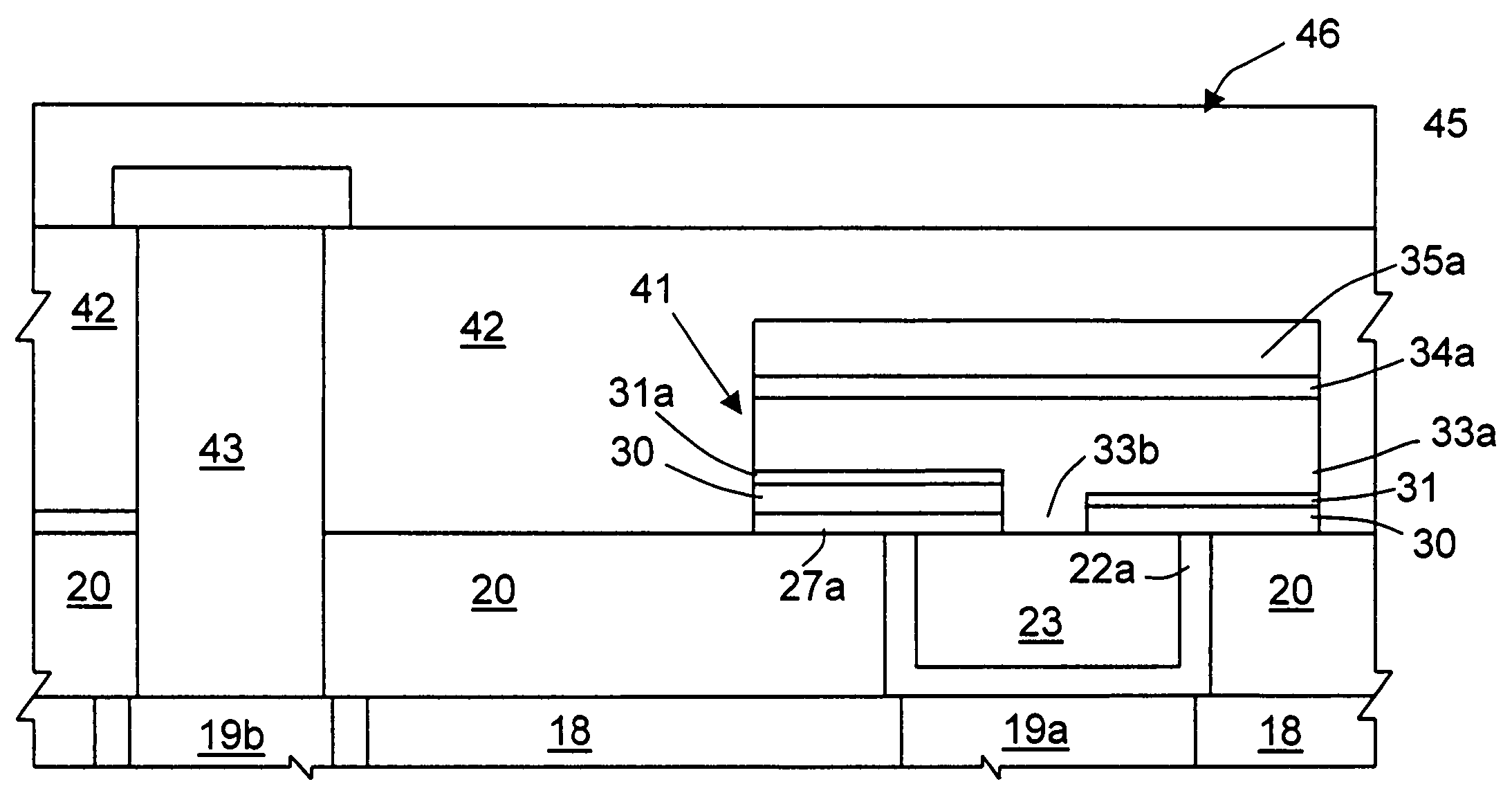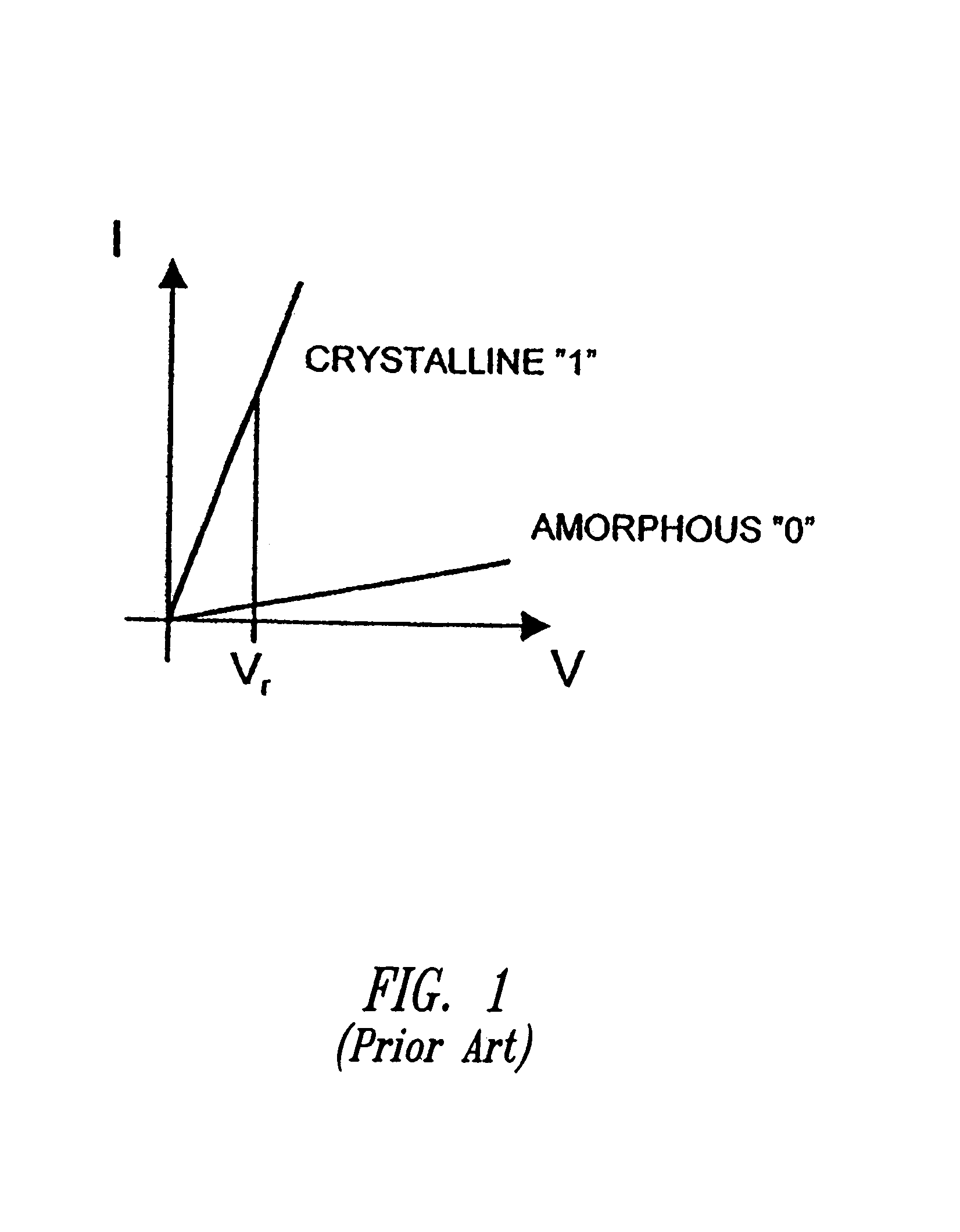Sublithographic contact structure, in particular for a phase change memory cell, and fabrication process thereof
a contact structure and phase change technology, applied in the direction of bulk negative resistance effect devices, electrical devices, semiconductor devices, etc., can solve the problem that the width l may have tolerances that are not acceptable, and achieve the effect of good accuracy and dimension control
- Summary
- Abstract
- Description
- Claims
- Application Information
AI Technical Summary
Benefits of technology
Problems solved by technology
Method used
Image
Examples
Embodiment Construction
[0028]FIG. 4 illustrates the basic structure of a contact structure according to one embodiment of the invention. In detail, an electronic device 90 has a body 91 (e.g., a substrate) of monocrystalline material defining an upper surface 92 and a lower surface 93 and accommodating electronic components 94, represented schematically. A dielectric layer 95 extends on top of the body 91 and accommodates the contact structure, indicated at 98. The contact structure 98 is formed by a first electrode 100 and an active region 103 of chalcogenic material. The first electrode 100, connected to the electronic components 94 as shown schematically for one of them, has a horizontal portion 102 adjacent to and in contact with the active region 103. A second electrode 104 is formed on the active region 103 and is in electric contact therewith.
[0029]As better shown in the perspective view FIG. 5, the horizontal portion 102 has an elongated shape extending along a longitudinal direction X parallel to...
PUM
 Login to View More
Login to View More Abstract
Description
Claims
Application Information
 Login to View More
Login to View More - R&D
- Intellectual Property
- Life Sciences
- Materials
- Tech Scout
- Unparalleled Data Quality
- Higher Quality Content
- 60% Fewer Hallucinations
Browse by: Latest US Patents, China's latest patents, Technical Efficacy Thesaurus, Application Domain, Technology Topic, Popular Technical Reports.
© 2025 PatSnap. All rights reserved.Legal|Privacy policy|Modern Slavery Act Transparency Statement|Sitemap|About US| Contact US: help@patsnap.com



